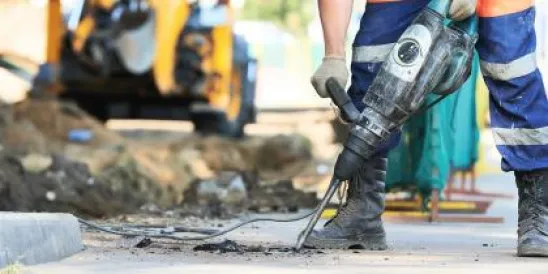The Occupational Safety and Health Administration (OSHA) officially kicked off its National Emphasis Program (NEP) on Trenching and Excavation on October 1, 2018. With the NEP comes enhanced enforcement, education, and a new OSHA instruction related to OSHA’s trenching and excavation standards in Subpart P of the Construction Standards.
What’s In the New Instruction?
OSHA has superseded its 1985 Special Emphasis Program instruction in light of an uptick in trenching and excavation accidents and fatalities. The NEP requires OSHA area and regional offices to concentrate their enforcement resources on employers performing work involving trenching and excavation. Specifically, OSHA compliance officers will initiate inspections under the NEP whenever they observe an open trench or open excavation, regardless of whether a violation has been readily observed; if an inspector sees trenching or excavation activity, the NEP directs the inspector to initiate an inspection. Worksites with trenching or excavation activity will be given a higher priority, provided an inspection would not interfere with other inspections deemed to be more important.
The NEP also calls for inspectors to initiate inspections when they observe other employers performing trenching or excavation work near inspection sites. Thus, if OSHA is at a worksite for a programmed inspection, compliance officers will also be looking for trenching or excavation work. While the NEP inspections will be mostly limited in focus to trenching and excavation activities, OSHA can expand the scope of an inspection to include other observed hazards or violations.
What Do Employers Need to Know?
Employers engaged in trenching and excavation work should continue to be mindful of the requirements under Subpart P of the Construction Standards. The NEP means that employers performing trenching or excavation work are subject to the dreaded “drive-by inspection.” If an inspector happens upon an employer’s excavation, an inspection can be opened. As always, once OSHA begins an inspection, even if it is intended to be limited in scope, and the inspector notices any other hazards, those can be cited as well. Employers should also remember to make sure recordkeeping is up to date as well because an inspection will often result in a request for 300 logs.
But the NEP may create legal problems for OSHA. The Supreme Court of the United States has long held that the Fourth Amendment requires OSHA to obtain an administrative search warrant to conduct an inspection if the employer refuses to consent to the inspection. “‘The businessman, like the occupant of a residence, has a constitutional right to go about his business free from unreasonable official entries upon his private commercial property,’” wrote Justice Byron White in the Court’s seminal ruling in Marshall v. Barlow’s, Inc. Yet the Court gave the agency two easy methods to obtain an administrative warrant. One way is by presenting evidence of a specific violation. Most often, a precisely worded employee complaint will suffice to persuade a federal magistrate or district judge to grant OSHA’s application for a warrant. The second way is by presenting evidence that the business was selected for inspection “on the basis of a general administrative plan . . . derived from neutral sources . . . .” The NEP, however, is on shaky ground.
According to one circuit court, “derived from neutral sources” typically means “either random selection or selection by relevant statistics that have no individual human component for the reason that searches flowing from these types of plans could not be the product of an agency's arbitrary decision.” To date, courts have never upheld the validity of an emphasis program that generally instructed employers to look around until they found a trenching or excavation site. Not even OSHA itself considers the “look around” approach as truly random and neutral. The agency has a lengthy and complicated instruction, CPL 2.25I, for selecting industry worksites for random emphasis program inspections, using old-school random number tables.
The new NEP does not even pay lip service to OSHA’s CPL 2.25I instruction. Instead, “look around and inspect everything” is essentially the only guidance the NEP provides to inspectors on selection of a worksite for inspection. If it’s close to your freeway exit, inspect it. If it’s next to your favorite lunch spot, inspect it. If you don’t like the logo of the company, inspect it. Any unbridled discretion into the selection of the worksite leaves the NEP open to legal challenge in court if the employer demands a search warrant.
Did OSHA Issue Any Other Compliance Guidance?
Yes! OSHA issued new compliance guidance in response to the NEP. OSHA has a good online resource for practical guidance on complying with the standards. OSHA also updated the Trenching and Excavation Quick Card in advance of the NEP.




 />i
/>i

